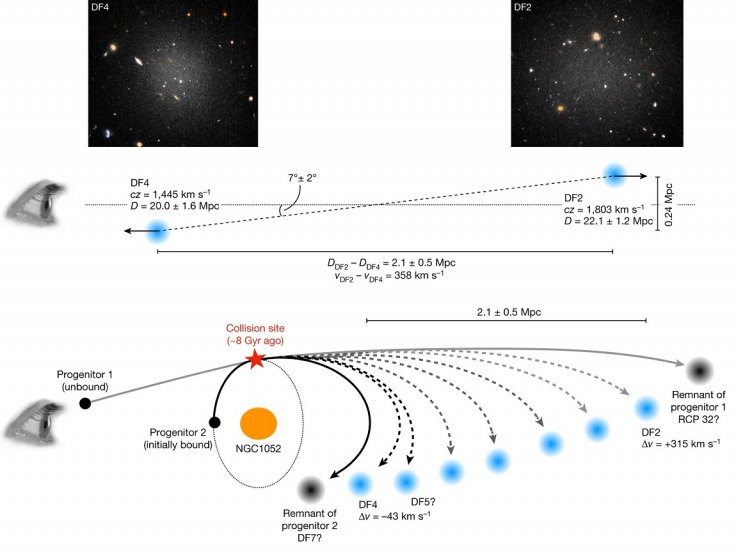A new study suggests that a collision between two dwarf galaxies could explain the dark matter–free dwarf galaxies that have been discovered in the last few years. The team of astrophysicists that developed the theory are associated with several institutions in the US, one in Germany and one in Canada.
Two discoveries of dwarf galaxies devoid of dark matter and no detectable gravitational pull, in 2018 and 2019 prompted researchers to analyze and conduct a study to arrive at a better explanation of the bizarre findings, as reported by Phys.org

These studies indicated the presence of dark and normal matter separating on a large scale when clusters of galaxies collide. The researchers attempted to expand on the previous findings and after reviewing the entire process they deduced that a phenomenon identical to it resulted in the creation of two or more dwarf galaxies devoid of dark matter.
Multiple dwarf galaxies were detected in the same vicinity as the two mentioned before. The team suspects a collision might have occurred between two dwarf galaxies as all them appeared to be lining up in the sky. The two galaxies were also expected to have the same origin because they were moving away from each other, the researchers noted.

The creation of these new and smaller dwarf galaxies, some without any dark matter is believed to have occurred due to a collision between two dwarf galaxies which might have split the gas within them.
The researchers explained that the formation of ones without any dark matter might have been due to the lack of interaction with regular matter or dark matter itself, it could have escaped when the collision took place.
The research findings were published in the journal Nature. Eun-jin Shin and Ji-hoon Kim with Seoul National University also published a News & Views piece in the same journal issue, describing the work and findings by the researchers in the study in detail.









